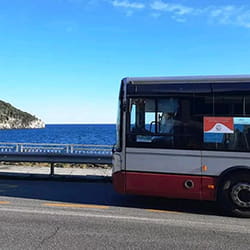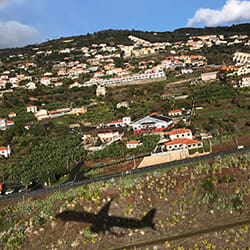By the way, Spanish (español) was born in the Castilla region of the central Iberian Peninsula, and is also known as Castilian (Castellano). This is the language that spread throughout the country as a result of the Kingdom of Castilla effectively unifying the country, so when one thinks of "standard" Spanish, that would be the language that was created and now used in the present-day province of Castile and León, particularly in cities such as the historical provincial capital of Salamanca, known for its historical 800-year-old university, and Valladolid, the one-time capital of Spain.
For example, if you get a job at the Japanese Ministry of Foreign Affairs and focus on Spanish, these two cities are often where you would be sent for training. The likely reasoning is that they are considered the best places to learn "standard" Spanish. As a diplomat, it is quite natural to learn the form of a language that is considered the most standard, and if the Spanish Ambassador to Japan suddenly started making public addresses in the Semba dialect (a dialect traditionally used by merchants in Osaka), while that may be charming and get a big response, whether it's a suitable way of speaking when handling diplomacy is another issue altogether.
As such, the "standard" Spanish used in Spain is that of the Castilla region. However, that is only a standard, which is not to say that the Spanish used in other regions or countries is incorrect, nor are they any more beautiful- or ugly-sounding. Besides, "beautiful" and "ugly" are subjective, so I can't say anything definitely in that regard.

A “standard” dictionary: Diccionario de la lengua española (Dictionary of the Spanish Language) by Real Academia Española (Royal Spanish Academy)

A “standard” grammar handbook: Nueva gramática básica de la lengua española (New Basic Grammar of the Spanish Language) by Real Academia Española (Royal Spanish Academy)
This Spanish, much like English, is a very widely used language, so while the normative grammar is the same there are unique dialects that have developed in various regions and countries, and that creates a still different culture all its own. For example, Andalusian Spanish (Andalú) is a dialect of Castilian spoken in daily life in southwest Spain's Andalusia region, and even within that there are dialects in the Grenada, Sevilla, and Cádiz areas, each with differences in vocabulary, expressions, and intonation, much in the same way that the Kansai dialect exists but Kobe, Osaka, and Kyoto all have their own unique ways of speaking.
Spanish (specifically Castilian) first spread to the Americas in the 15th century. Currently, 18 countries in Central and South America have Spanish as their official language. Due to the living nature of language, over that 500 years, as is the case all over the world, the language has changed in different ways in each country and region to the extent that it is not difficult to imagine that the "standard" Spanish used in Argentina is vastly different than what is used in neighboring Chile.
Every country in Central and South America has its own version of "standard" Spanish, so it is perfectly natural to consider the notion that the Spanish spoken in Spain isn't necessarily the only "standard" Spanish.
When writing this article, I was reminded of someone from the Ministry of Foreign Affairs who studied at the University of Salamanca: Eikichi Hayashiya, who served as the Japanese Ambassador to Spain from 1981 to 1984. After studying Spanish at Osaka Foreign Language School (which later became Osaka University of Foreign Studies), he joined the Ministry of Foreign Affairs and did his overseas training at the University of Salamanca from 1941 to 1943. Not only did he deepen ties between Japan and the Spanish-speaking world as a diplomat, he also had excellent literary achievements, including a Spanish translation* of the Japanese classic Oku no Hosomichi ("The Narrow Road to the Deep North") and Japanese translations of the navigational journals of Christopher Columbus and other historical texts. In honor of those achievements, the Japanese-Spanish Culture Center Library at the University of Salamanca is named Biblioteca Embajador Eikichi Hayashiya de Estudios Japoneses ("Ambassador Eikichi Hayashiya Library for Japanese Studies"). * Joint translation between Hayashiya and Octavio Paz, diplomat of the Mexican government and winner of the Nobel Prize for Literature.
As another aside, Ambassador Hayashiya was also known for his fine character. When he was serving as ambassador in Madrid, during gaps in his busy schedule as an official figure, he would often appear in the city and offer words of encouragement to budding artists and musicians who had come from Japan, poor international students, and even young travellers on shoestring budgets.






























































